UNESCO World Heritage Sites in Sri Lanka
Heritage is our legacy inherited from past generations maintained present and passed down to future generations. With a millennia-old history, Sri Lanka boasts a splendid cultural and natural heritage and is home to eight world heritage sites viz. the ancient cities of Polonnaruwa and Sigiriya, the sacred cities of Anuradhapura and Kandy, the golden temple of Dambulla, the old town of Galle and its fortifications, Sinharaja Forest Reserve and the Central Highlands.
Anuradhapura
Recorded history refers to Anuradhapura as the first capital of Sri Lanka. This extensive city holds relics of architectural ruins of its ancient kingdom, Buddhist temples not seen in most parts of the world repairing to grip history the minute you step into this sacred city; Anuradhapura. It is the base of ancient civilization in Sri Lanka and an ancient city with a rich heritage in history, culture, politics, and religion.
This UNESCO World Heritage Site offers a deep insight into the life and times of the majestic kings of Sri Lanka, the engineering and architectural potential of the times. The most famed monument is the ruins of the Brazen Palace and the Ruwanwelisaya built by King Dutugemunu in 164BCE. Anuradhapura is one of the three stunning locations in the Cultural Triangle. Mahamevuna Uyana houses the Sacred Bo Tree or Sri Maha Bodhi, the oldest authenticated sacred tree, which says to date back to BCE and planted from a sapling from the sanctified tree under which Gautama Buddha attained enlightenment.
The largest Dagoba in the world is Jetawanaramaya.
The city spreads with ruins of ancient Dagobas and other sites of religious significance. Their complicated carvings and sculptures are remarkable, the ancient stones speak of the days of yore the city ruled by brave kings presided by Buddhist clergy. Pilgrims around the world flock to Anuradhapura; it regards as a place where Buddhism safeguards humanity.
It is unfortunate that the city declined in importance to foreign invasions and went into disorder. Polonnaruwa gained prominence in the 10th century AD. A complete Archaeological Museum located in the city offers a greater understanding of the city’s unique monuments. The city remained the capital for 1,000 years and the height of its rise commanded great respect and power internationally. There is little to do in the city apart from visiting the ancient temples, monasteries, and tanks. A visit to Anuradhapura leaves, the visitor with a sense of wonder and history deep that the experience lingers long after the visit.
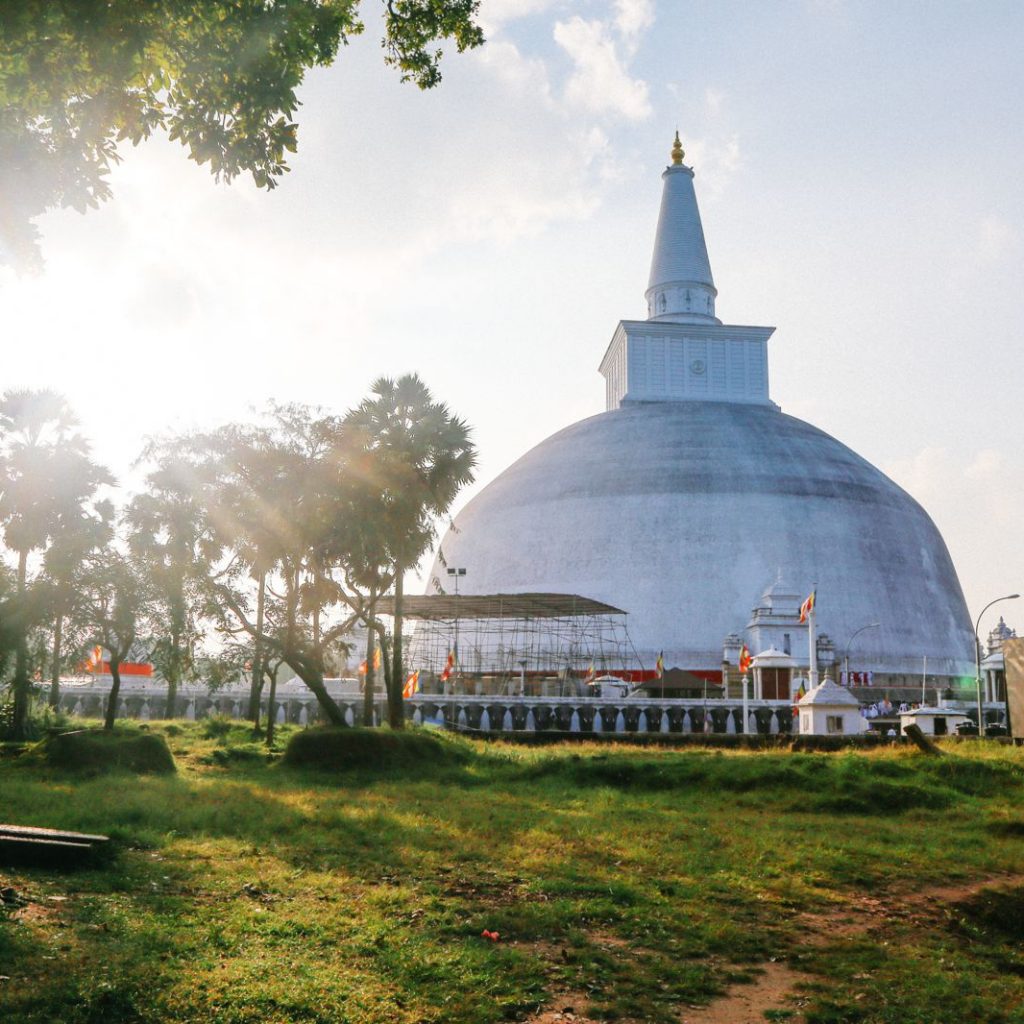
Dambulla
Dambulla is part of the Cultural Triangle. It houses the gigantic Dambulla Cave Temple declared a UNESCO World Heritage site. The Dambulla caves date back to the 1st century BCE. It was the refuge of King Walagamba, and the caves convert into a rock temple. It houses beautiful frescoes and an imposing 15-meter long reclining Buddha and Hindu deities. The caves consider being the finest storehouse of Sinhala art and sculpture.
It has five caves under a vast overhanging rock, carved with a drip ledge to keep the interiors dry. In 1938 the architecture inflates with arched walkways. Inside the caves, the ceilings are painted with complex patterns of religious images of the contours of the rock. There are images of Lord Buddha, and Bodhisattvas, various gods and goddesses. Five caves convert to shrine rooms. The caves, built at the base of a 150-meter high rock the Anuradhapura (1st Century BCE to 993 AD) and Polonnaruwa times (1073 to 1250 AD), are the inspiring of cave temples in Sri Lanka.
The largest cave measures about 52 meters from east to west, and 23 meters from the entrance to the back, this amazing cave is 7 meters tall at its highest point. Hindu deities represent here, and the kings Walagamba, Nissankamalla, and Arhant Ananda; the Buddha’s most devoted disciple. Within these shrines, rooms have housed a collection of one hundred and fifty statues of the Buddhist Order and the country’s history. These statues and paintings represent many eras of Sinhala art and sculpture. The Buddha statues are in varying sizes and outlooks; the largest is 15 meters long. One cave has over 1,500 paintings of the Buddha covering the ceiling.
The Dambulla cave monastery is functional and remains the best-preserved ancient structure in Sri Lanka. This complex dates from the 2nd and 3rd Centuries BCE; it establishes the largest and important monasteries. King Walagamba converted the caves into a temple in the 1st century BCE. Exiled from Anuradhapura, he sought refuge here from South Indian invaders for 15 years. After reclaiming his capital, the King built a temple in thankful worship. Many Kings added to it and by the 11th century, the caves had become a major religious Centre. King Nissankamalla gilded the caves and added about 70 Buddha statues in 1190 AD. In the 18thcentury, the caves restore and painted by the Kandyan Kings.
A hike to the highest Rose Quartz Mountain Range in South Asia offers, the pleasure of a striking view of the neighboring area for miles around. With a history spanning over 1,000 years, Jathika Namal Uyana, known as the Ironwood Forest, offers a fascinating trek through a deep jungle comprising of the Sri Lankan national tree, the Na (Ironwood). The forest is of an important ecological extent and is the focus of studies by ecologists and students of nature.
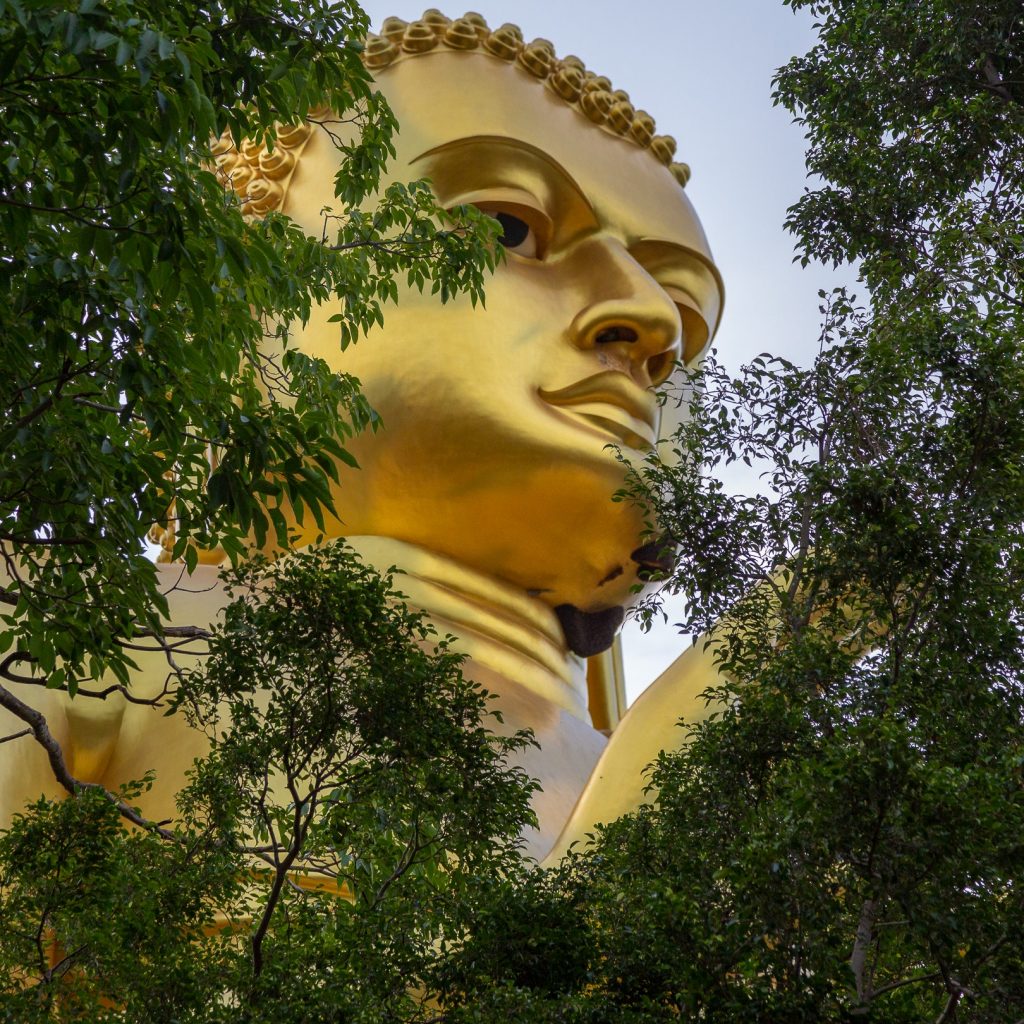
Galle Fort
Sir Emerson Tennant claims that Galle, the “Tarshish” mentioned in the Bible as the harbor where ships trading with King Solomon obtained their Elephants, Peacocks, and Gemstones. The place where the Galle Fort now stands areas in Galle, Unawatuna, Magalle, Kaluwella and the China Gardens ( held a colony of Chinese traders years ago) were areas with historic connections go long the Portuguese Era. International traders, Persians, Moor traders from the Persian Gulf, South Indian traders, Malays, and the Chinese and a host of other nationalities lived and traded in Galle. The Cripps Road inscription reveals the polyglot and poly-ethnic character of Galle. Even in early British times, the earliest embassies situate in Galle. The First Consul from the USA was resident in Galle.
The Galle Fort was built by Dutch rule and it is the largest, the most secured fortress in Sri Lanka. It declares an archeological reserve by the UN in 1969 and in December 1988, UNESCO declared Galle Fort World Heritage 38th Monument. A Parliament bill titled Galle Heritage Foundation Act passes in 1994 in Sri Lanka. These claims, Galle Fort is unique, very special, and charming there are no other sites, areas, fortress, or location compared with Galle Fort walled city of 38 hectares (90 acres) in Sri Lanka.
The Fort of Galle is the living symbol of this history the Sri Lankan Government turns out to be conscious of its responsibility, to protect and preserve the tangible remains of our history. Let the world heritage site of Galle remain symbolic of its heritage and not become a Centre of palatial dwellings of foreigners, nightclubs, and all that go with them.
It is the place in Sri Lanka, that retains a unique old-world atmosphere and its unique place in the history of VOC. It houses eight religious institutions that include Temples, Y.M.B.A, and Y.W.C.A. Churches, Mosques, Zaviyas and Thakkiyas, etc, that have pioneered and propagated religion and upheld all cultural values, morals, traditions, customs, and other activities for several centuries. Galle is home to educational institutions Southlands Maha Balika Vidyalaya was established, in 1885 for girls, All Saints Maha Vidyalaya was established in 1876 for boys, Al Bahjathul Ibrahimiya Arabic College was established in 1892 for boys from Sri Lanka and three Montessori schools are in operation.
Eighty percent of Galle Fort has remained a valued residential location. It has around 375 dwelling houses of Sinhalese, Muslims, Tamils, Burghers, and others living for years in total harmony without any communal differences. Galle Fort remains an esteemed and respected residential location for centuries, with its rich religious, educational, and cultural values. It has been producing eminent scholars, educationists, doctors, engineers, lawyers, professionals, and reputed businessmen. There are some 25 small business premises and about 16 government offices.
The sea beaches and the beautiful ramparts surrounding. The Fort has become nature’s inspiration which features in many magazines here and abroad. The history of Galle Fort reveals that it has maintained a flawless reputation, devoid of criminal records at all times resulting in all communities within the Fort living in peace and amity upholding all human values. The combination of historical, archaeological, and architectural institutional and residential, buildings and the fortress inspires and influences UNESCO to declare Galle Fortress world heritage which should for many centuries come to modify and converted into varied types of liquor bars and vice dens.
Galle is one of 213 places of great historical value in the world that should conserve and protected for posterity. Perhaps the earliest recorded reference to Galle comes from the great Arab traveler Ibn Batuta, who visited the port which he calls Qali-in the mid-14th century. The Portuguese arrived in 1505 a fleet commanded by Lorenzo de Almeida took shelter from a storm. The strategic significance of the harbor impressed the Portuguese, for 82 years, in 1587; they seized control of the town from the Sinhala kings and began the construction of the Galle Fort. This event marked the beginning of almost four centuries of European domination of the city, resulting in the fascinating hybrid-architecturally, culturally and ethnically-which Galle is today.
The Dutch captured the city from the Portuguese in 1640 and immediately began strengthening the defenses. They remained for almost 150 years the city was in turn taken by the British in 1796. Not 1947, Ceylon gained its independence from the British, did Galle become, an independent city-and the long years of association with European colonialism had left a lasting stamp on the city makes it unique in today’s Sri Lanka. In recognition of this fact, the Old City of Galle-essentially the fort and its surroundings declared a World Heritage Site in 1988.

Kandy
Kandy was the capital of Sri Lanka; its history brings to mind images of riches, marching elephants, and much pomp and pageantry. Kandy is amongst a hilly terrain and all eyes draw to the Centre of the city, where the Kandy Lake forms a charming feature. It’s one of the eight UNESCO World Heritage sites in Sri Lanka. Kandy was the home to the Kandyan Kings of yore in the 19th century and a fountain for all the music, arts, crafts, and culture in the country. Taking in a performance of Kandyan Dancers is like floating on an unending wave, where rhythm and movement become one against the backdrop of the throbbing drums
Kandy keeps hold of great religious significance for Sri Lanka. It is in this delightful city that the Dalada Maligawa or ‘Temple of the Sacred Tooth Relic’ lies well-guarded the attack on its building by terrorists. The best time to visit Kandy would be in July/August you can witness the annual Kandy Esala Perahera, and a memorable parade that mirrors the pomp and pageantry of kings, and notably on occasion a replica of the relic is a casket parade. Almost 100 elephants parade along the main streets of the city, adorned with ceremonial gear, and are accompanied by dancers and drummers for over 10 fascinating days
If you miss this spectacle, there are many more sights and sounds in Kandy that would hold your attention. The Peradeniya Botanical Gardens invite visitors to a learning experience about flora and fauna, some majestic trees that can trace back centuries. A visit to the National Museum highlights the city’s royal past and is well worth a stop. The Malwatta and Asgiriya Monasteries house ancient manuscripts and other treasures from a bygone era
Kandy is an exciting place for shopping and a well-known center for elaborate brass, bronze, and silverware. Batiks, handlooms, ceramics, jewelry, redware, and jewelry are other readily available items. This hill capital is at the heart of the island’s history and identity, no visit to Sri Lanka is complete without a stop-over in Kandy. The Temple of the Sacred Tooth Relic of the Buddha is the most revered Buddhist temple in Sri Lanka. And it is located in the royal palace complex. In ancient times, the relic plays an important role in local politics it believes that whoever holds the relic holds the governance of the country. Kandy was the capital of the Sinhalese kings is a UNESCO world heritage site to the temple
Monks of the two chapters of Malwatta and Asgiriya conduct daily worship in the inner chamber of the temple. Rituals are performed three times daily: at dawn, at noon, and in the evening. On Wednesdays, there is a symbolic bathing of the Sacred Relic with an herbal preparation made from scented water and fragrant flower owners, called ‘Nanumura Mangalaya’. This holy water is believed to contain healing powers and is distributed among those present
The temple sustained damage from the bombings by Tamil terrorists restore. Fortified by a terrain of mountains and the difficult approach Kandy managed to operate independently in 1815. It builds within the royal palace complex which houses one of the two surviving relics of the tooth of Buddha, an object of veneration for Buddhists. The other Sacred Tooth Relic believes to enshrine in a Stupa called Somawathie chetiya. The Sri Dalada Maligawa in Kandy, the temple that houses the Sacred Tooth Relic of the Buddha, is the venerated sacred Buddhist shrine in the world not by Buddhists of Sri Lanka by Buddhists all over the world.
King Vimaladharmasuriya I (1592 – 1603) was the first to select Kandy as the ruling capital, originally built a two-storied temple for the Relic and brought the Tooth Relic from Delgamu Raja Maha Viharaya near Kuruwita in Sabaragamuwa province, hidden for protection from Portuguese. King Vimaladharmasuriya II (1686 – 1706) built a 3 storied temple and his son King Viraparakrama Narendrasingha (1706 – 1738), the Sinhala king to rule the country, built a new 2 storied temple seeing the old temple built his father had decayed
The king of Sri Lanka, Sri Wickrama Rajasingha (1797- 1814) built the Pattirippuwa (the Octagon).
Originally, the Pattirippuwa is part of the royal palace used by the king to address his fellow countrymen. Today the Pattirippuwa has become a part of the temple and houses ancient textures written in Ola leaves.
The entrance to the temple complex is through the “Maha Vahalkada”. There are two walls on the sides of the “Vahalkada”.
The outer wall calls “Walakulu Bamma” (wall of clouds). This same pattern use in the wall surrounding Kandy Lake. The inner wall calls “Diyareli Bamma” (wall of water ripples). These walls build with holes to place oil lanterns in the night. After passing the “Vahalkada” and the moat, is the “Makara Thorana”. Next is the tunnel “Ambarawa”. Passing this you come to the ground floor of the temple complex. The lower floor of the building calls “Pallemaluwa”.
This inner chamber is fortified with a large wooden door and decorated with bronze and ivory. The area in front of the door calls the “Hevisi Mandapaya” (Drummers Courtyard) where the daily rituals carry out. The tooth relic keeps on the upper floor in the chamber calls “Vadahitina Maligawa”. The door to this chamber covers with gold silver and ivory.
The tooth relic encased in seven gold caskets studded.
The outer casket studded by precious stones offers to the tooth relic by various rulers. On the right to the relic, is the “Perahara Karanduwa” (relic chamber used in the annual Esala Mangalya Perahera (procession) kept inside a bulletproof glass display.
This donates by India. Over the relic chamber, there are golden lotus flower studs with precious stones hanging from the ceiling. On to the left of the temple is the new building which houses the taxidermy, remains of the Maligawa Tusker – Raja. This magnificent Tusker captures the jungles of Eravur in the Batticaloa District in 1925. He purchases by Tikiri Banda Manampitiya Disawe for Rs 3,300/- in 1937 and donates to the temple by him. For over 50 years Raja carried the golden casket which carried the tooth relic and in 1984, he declares as a national treasure by the government. This is the second time a Tusker declare a national treasure.
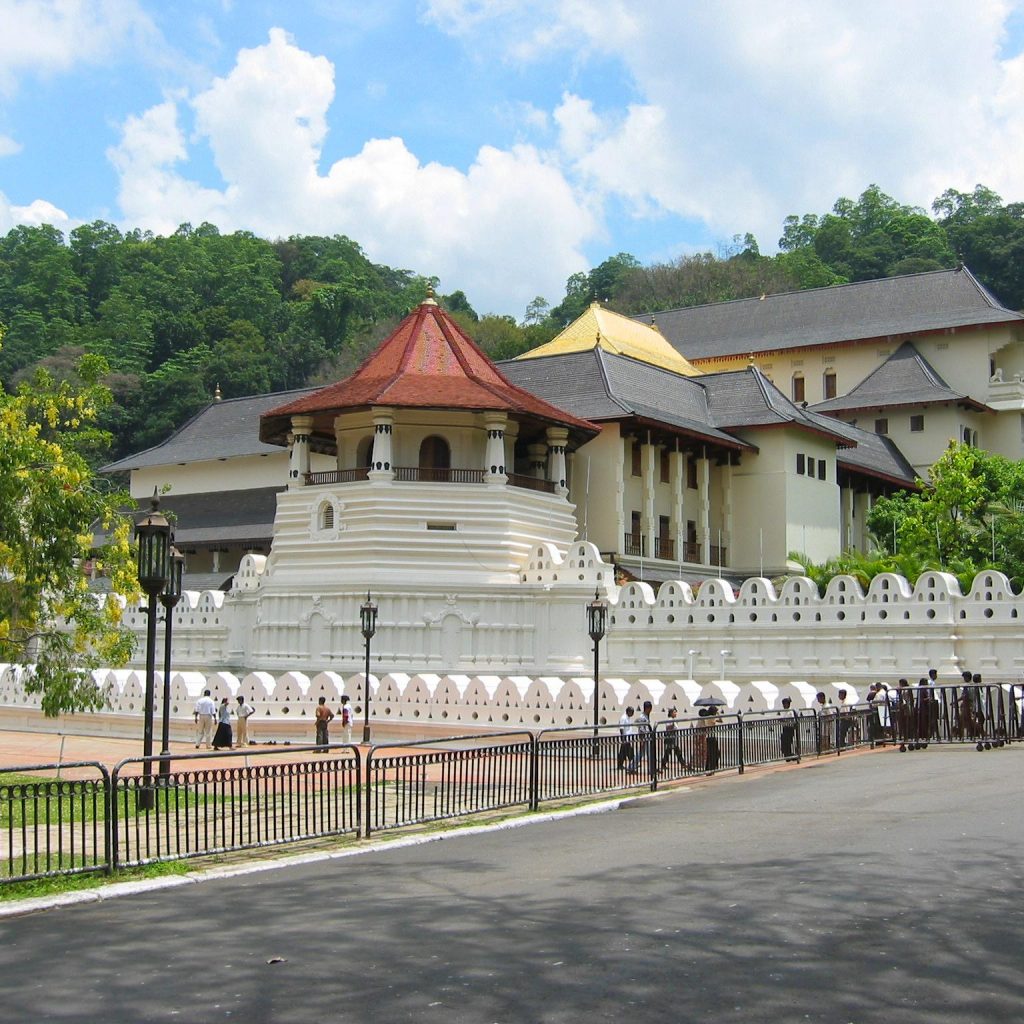
Polonnaruwa
Mahavamsa and Chulavansa speak of Pulasthipura; the early historical name of Polonnaruwa; a UNESCO world heritage site, which has a great history of invasions and struggle. Behind it rightfully forms the third element in the Cultural Triangle. Located about 140 km northeast of Kandy, Polonnaruwa offers hours of endless pleasure for history and culture lovers, as there are numerous sights of significance.
Polonnaruwa became the capital of Sri Lanka subsequent to the decline of Anuradhapura and witnessed, the Sinhala Buddhist civilization reaching much greater heights. The vast irrigation network with reservoirs that look inland seas sustains classic balance in rice cultivation, the rule of King Parakramabahu the Great (1153-1186 AD), and Sri Lanka came to know as the Granary of the Orient. The main attractions are the conserved ruins of glorious royal palaces, massive Buddhist temples, and unbroken monuments in colossal statues carved from solid rock boulders, and with its conserved ruins and renovated ancient irrigation reservoirs it is a “must visit” destination in Sri Lanka.
The conserved cultural monuments would enlighten the tourists, the wildlife sanctuaries in the district of Polonnaruwa afford ample opportunities for joy and fun in the close range of wild elephants, other mammals to the lovers of wildlife. At the city of Polonnaruwa, the largest ancient irrigation reservoir called Parakrama Samudra (Sea of Parakrama) is always lovely with the excess of birdlife, it is seldom that there is not something interesting going on upon its shimmering expanses of waters. Polonnaruwa is located in between Wildlife at Minneriya National Park, Wasgamuwa National Park, Kaudulla National Park, and Eco Hotels at Kandalama and Habarana.
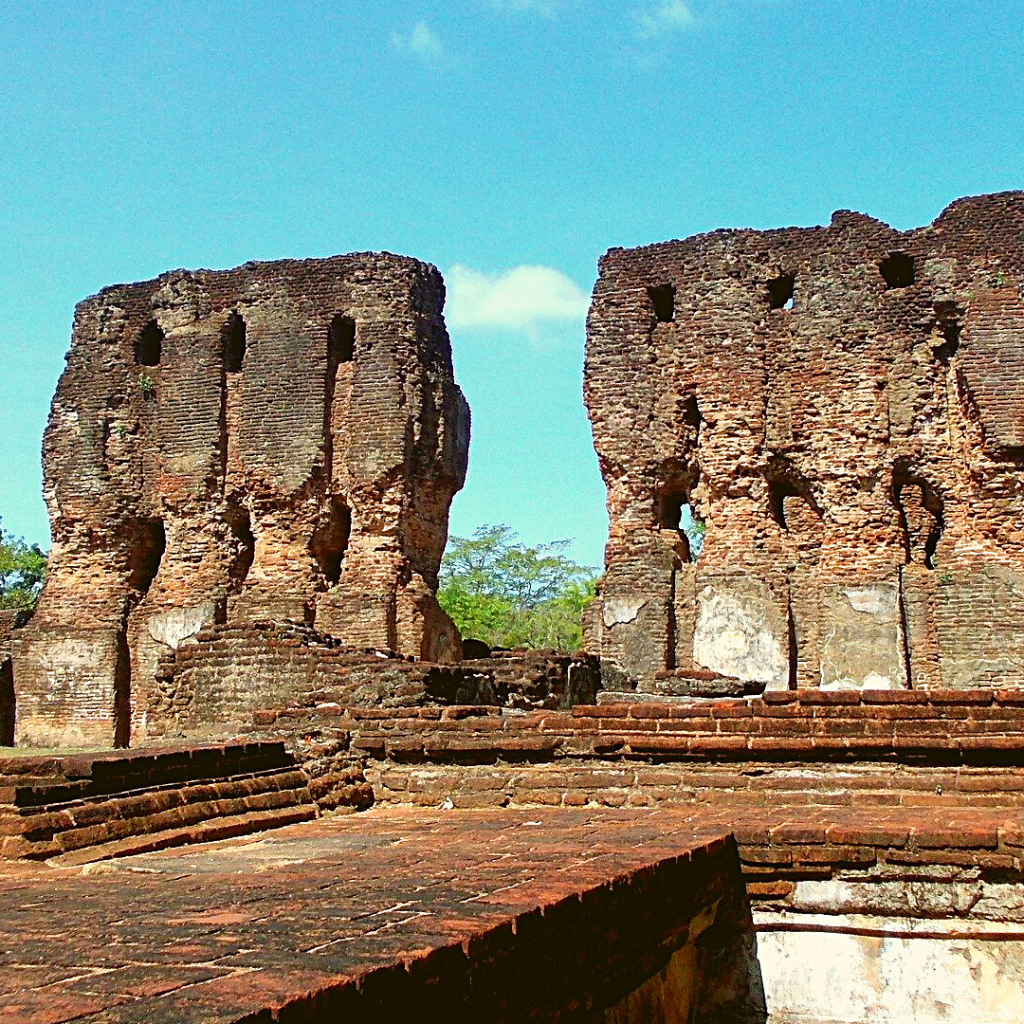
Sigiriya
The Cultural Triangle Project, launched by the Government of Sri Lanka, focused its attention on Sigiriya in 1982. Archaeological work began on the entire city for the first time under this project. There was a sculpted lion’s head above the legs and paws flanking the entrance, the head had broken down many years ago.
Sigiriya consists of an ancient castle built by King Kassapa in the 5th century. The beginnings and the original builder of Sigiriya challenges by many local and foreign historians and archaeologists. The Sigiriya has the leftovers of an upper palace on the flat top of the rock, a mid-level terrace including the Lion Gate and the mirror wall with its frescoes, the lower palace that clings to the slopes below the rock; the moats, walls, and gardens extending for some hundreds of meters out from the base of the rock.
It is a palace and a fortress. Its age, the splendor of the palace furnishes a stunning insight into the ingenuity and creativity of its builders. The upper palace on the top of the rock includes cisterns cut into the rock that retain water. The moats and walls that surround the lower palace are gracefully attractive.
Sigiriya considers the important urban planning site of the first millennium and the site plan considers very elaborately and imaginative. The plan combined concepts of balance and irregularity to intentionally link the man-made geometrical and natural forms of the surroundings. On the west side of the rock lies a park for the royals, laid out on a balanced plan; the park contains water-retaining structures, including sophisticated surface/subsurface hydraulic systems, some work to date. In the south lies a man-made reservoir; these extensively use from the previous capital of the dry zone of Sri Lanka. Five gates place at the entrances. The more sophisticated western gate regards to reserve for the royals.
John in 1907 states; “The whole face of the hill appears to have been a gigantic picture gallery… the largest picture gallery in the world perhaps”. The paintings would have covered most of the western face of the rock, covering an area 140 meters long and 40 meters high. There are references in the graffiti to 500 ladies in these paintings. Many lost have been wiping out the Palace became a monastery that they would not disturb meditation. Historicity states that it would have been a monastery King Kassapa renovated. Frescoes from the popular collection can see on the rock surface, on the surface of the location called the “Cobra Hooded Cave“.
The frescoes classify as in the Anuradhapura period, the painting style is considered unique; the line and style of application of the paintings differing from Anuradhapura paintings. The lines are painted in a form that enhances the sense of volume of the figures.
The paint applies in sweeping strokes, using more pressure on one side, giving the effect of a deeper color tone towards the edge. Paintings of the Anuradhapura period contain approaches to painting, do not have the sketchy lines of the Sigiriya style, having a distinct artist’s boundary line. The true identities of the ladies in these paintings confirm. There are various ideas about their identity. Some believe that they are the wives of the king, some think that they are women taking part in religious observances. These pictures have a close resemblance to some of the paintings seen in the Ajanta caves in India. The frescoes, depicting beautiful female figures in graceful contour or color, point to the direction of the Kandy temple, sacred to the Sinhalese. The sacred temple of tooth builds much after Sigiriya.
Mirror wall made of some kind of porcelain, the wall now partially covers with verses scribbled by visitors to the rock. The mirror wall well preserves. Some historians and archaeologists state that the verses date from the 8thL century there are many who challenge it. People of all types wrote on the wall, on varying subjects love, irony, and experiences of all sorts, writing on the mirror wall bands. One such poem in Sinhala is.
The transliteration is: “I am Buda [the writer’s name]. Came with all my family to see Sigiriya. All the others wrote poems, I did not!” He has left an important record that Sigiriya visits by people beginning a very long time ago. Its beauty and majestic appearance, made people stand in awe of the technology and skills required to build such a place. The important aspects of Sigiriya are the gardens and it is the oldest landscaped garden in the world. The gardens divide into three distinct linked forms: water gardens, cave and boulder gardens, and terraced gardens.
The water gardens see in the central section of the western gardens. Three principal gardens find here. The first garden consists of a plot surrounded by water. It connects to the main precinct using four causeways, with gateways placed at the head of each causeway. This garden builds according to an ancient garden form and is one of the oldest surviving models of this form.
The second contains two long, deep pools set on either side of the path. Two shallow, winding streams lead to these pools. Fountains made of circular limestone plates place here. Underground water conduits supply water to these fountains function, the rainy season. Two large islands are located on either side of the second water garden. Summer palaces build on the flattened surfaces of these islands. Two more islands are located farther to the north and the south, in a manner similar to the island in the first water garden.
The third garden sits on a higher level, the two with a large octagonal pool on a raised podium on its northeast corner. The large brick and stone wall of the citadel is on the eastern edge of this garden.
The water gardens build on the east-west axis. They connect with the outer moat on the west and the large artificial lake to the south of the rock. All the pools interlink using an underground conduit network fed by the lake and connected to the moats. A miniature water garden is located to the west of the first water garden, consisting of several small pools and watercourses. This recently discovered smaller garden appears to build after the occupation of King Kassapa, possibly between the 10th and 13th centuries. This proves that Sigiriya was occupied by many from prehistory and even after King Kassapa.
The boulder gardens consist of several large boulders linked by winding pathways. The gardens extend from the northern slopes to the southern slopes of the hills at the foot of Sigiriya rock. Most of these boulders had a building or pavilion upon them; there are cuttings that use as footings for brick walls and beams.
The audience hall of the king positions in the boulder garden, the remains of which saw on the flattened and polished summit of a large boulder. There is a five-meter-long granite throne in this hall. The throne carves from the boulder itself and is not separates from it. A notable feature in the boulder garden is the Cistern rock, named after a large, carved cistern atop it. A large archway, created by two boulders, provides access to the terraced gardens.
The terraced gardens form from the natural hill at the base of the Sigiriya rock. A series of terraces rising from the pathways of the boulder garden to the staircases on the rock. These create by the construction of brick walls and are located in a roughly concentric plan around the rock. The path through the terraced gardens forms by a limestone staircase. From this staircase, there is a covered path on the side of the rock, leading to the uppermost terrace where the lion staircase situates.
Sigiriya uses as the location of many of the events in the science-fiction novel, The Fountains of Paradise by Arthur C. Clarke. Clarke changed the name to Yakkagala (“Demon Rock”) in the book. What made him do that gave me serious thought.
The view is that; King Kassapa constructed an open mouth lion’s head and built a new entrance and renamed Palace Chitrakoota of Lanka as ‘Sinhagiriya’ / ‘Sigiriya’. It confirmes in Mahavamsa. Had a lion’s head entrance existed it would appear in Ramayana, as Hanuman his spying tour detailed the fortress Dr. Mangala Illangasingha, Dean of the Faculty of Archaeology in the University of Kelaniya Sri Lanka in an article to ‘Silumina’ weekend Sinhala newspaper on 1989 February 12th stated that ‘if Kassapa employed the whole nation to build Sigiriya Fortress he would not have built this massive fortress in such a short period of time’. “Rawana Katha,” an ancient Ola book says that after Rawana’s s death Vibishana came to power and transferred the royal palace-fortress and capital from hill country to Kelaniya. Chitrakoot, the palace of Rawana became the abode of Yakkha noble called Chithraraja, a relative of Vibishana. Chithraraja’s palace had been a Yakkha Temple and later King Dhatusena’s son Kassapa [459-447 AD] arranged a coup d’état against the father and chose Chitrakoota Temple for his palace-fortress, as he believed that his mother was a descendent of Yakkha line. King Kassapa is the only King who renovated and maintained Sigiriya.
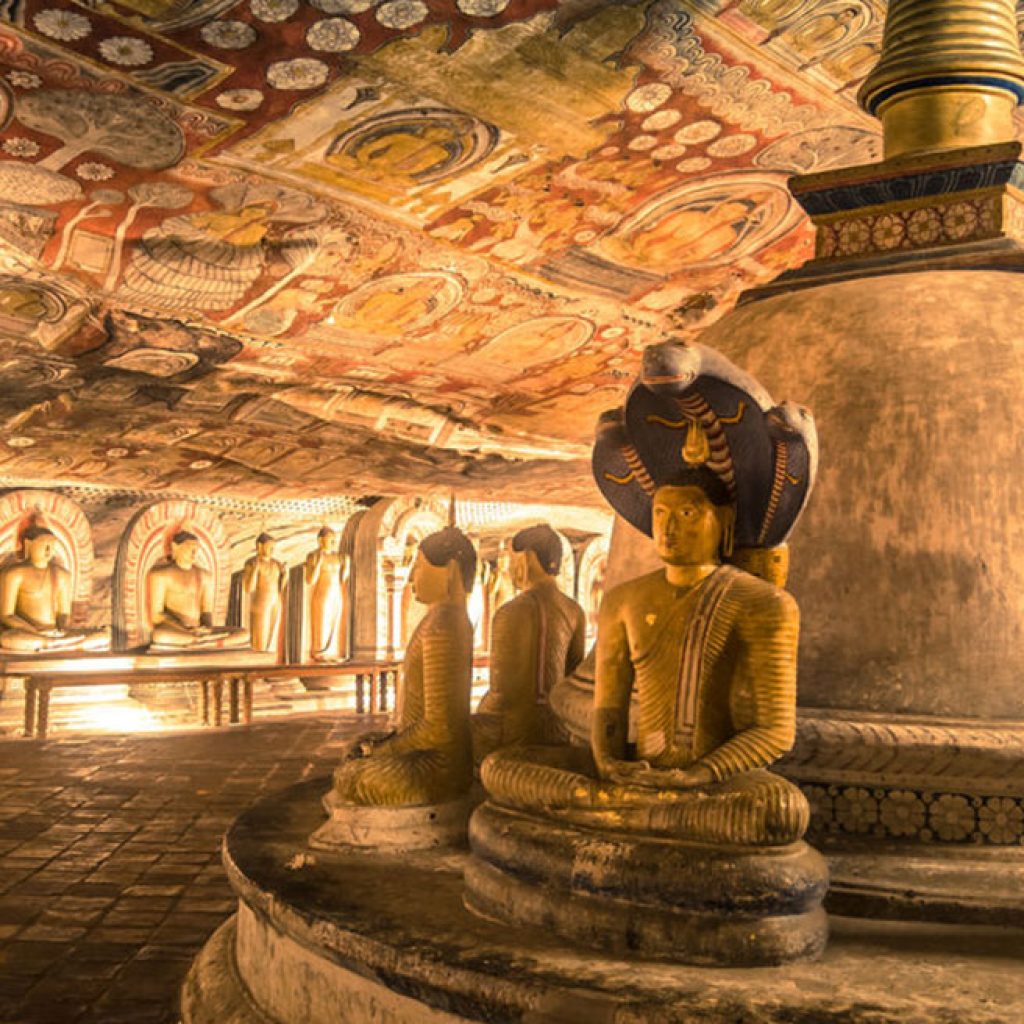
Sri Padaya (Adam’s Peak)
Peak Wilderness Sanctuary is the third largest nature reserve in Sri Lanka. It spreads over 224 square kilometers and a tropical rain forest around the Sri Pada (Adam’s Peak) mountain range. A huge forest area belonging to the Peak Wilderness cuts down and cleared the British colonial rule in Sri Lanka (1815-1948) to gain land for the massive tea estates function in the Nuwara Eliya district. The remaining declares a reserve on October 25th, 1940
The contours of this reserve vary from 1000 to 7360 feet above sea level. It possesses geographical formations to the other natural reserves of the island. Bena Samanala (6579 ft), Dotalugala and Detanagala, are some of the taller mountains in the Peak Wilderness. It is the birthplace of Kelani, Kalu, Walawe rivers, and many tributaries of the river Mahaweli make waterfalls Dotalu Falls, Grandi Falls, Galagama Falls (655 ft), and Mapanana Falls (330 ft) inside the sanctuary
Of the 3 access routes; Hatton, Kuruwita, and Palabaddala, the Buddhist devotees and other tourists make use of them to reach the Adam’s Peak, Kuruwita and Palabaddala routes go right across the Peak Wilderness Sanctuary. It is under the control of the Sri Lanka Wildlife Conservation Department does not maintain any lodge, bungalow inside the sanctuary to safeguard the purity of this forest. There is no restriction for eco-tourists to enter the sanctuary after obtaining permission from Sri Lanka Wildlife Conservation Department. Entering the sanctuary, the rainy season is at the tourist’s own risk the unforeseen downpours and instant floods that lead to life-risk situations.
Peak Wilderness sanctuary is within the Sabaragamuwa mountain range in the Central hills, there are no specific boundaries for the Peak Wilderness Sanctuary. Most boundaries mark by plantations owned by the Government and the private sector. The eastern boundary is clear and connected to the Piduruthalagala mountain region and Horton Plains National Park.
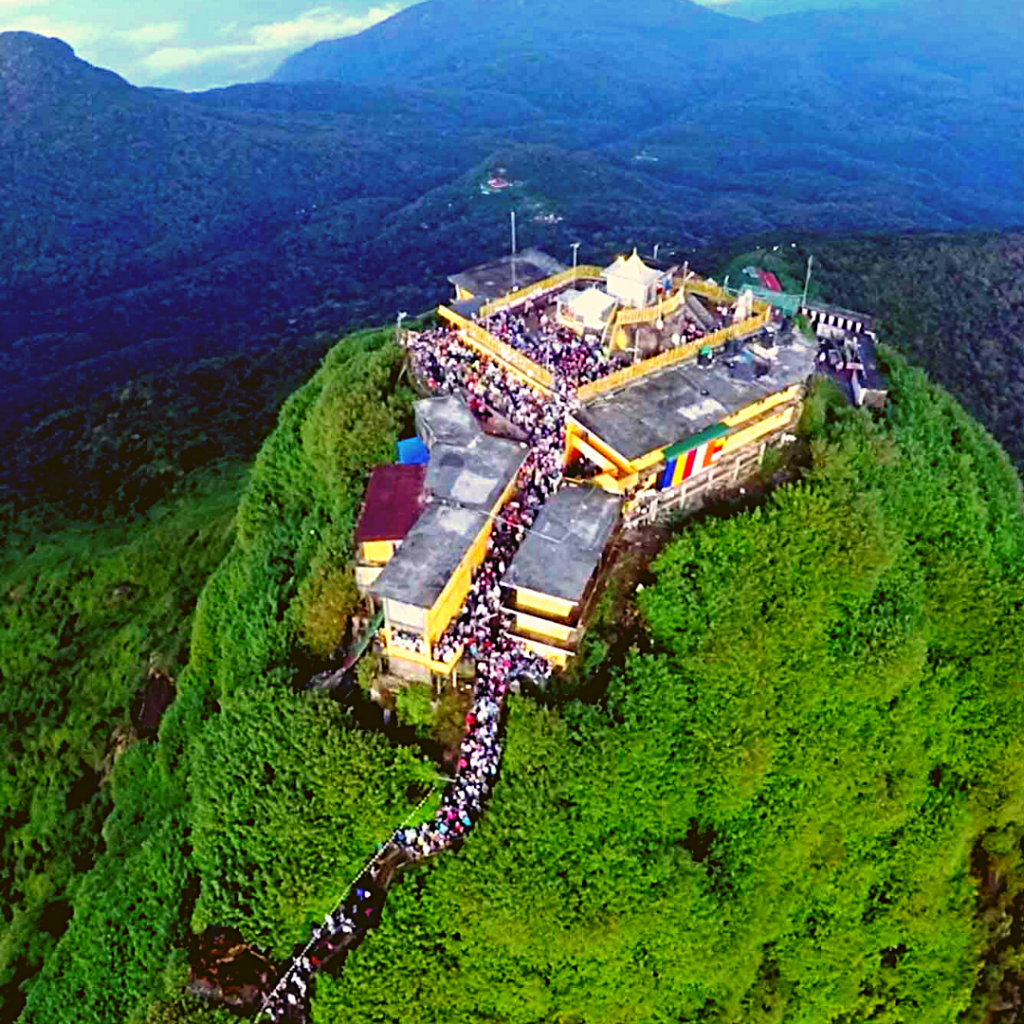
Sinharaja Forest Reserve
Sinharaja Forest Reserve is a national park and a biodiversity hotspot in Sri Lanka. It is of international significance and designate a Biosphere Reserve and World Heritage Site by UNESCO.
The hilly virgin rainforest, part of Sri Lanka’s lowland rain forests ecoregion, save from the worst of commercial logging by its inaccessibility and designate a World Biosphere Reserve in 1978 and a World Heritage Site in 1988.
The reserve’s name translates as Kingdom of the Lion. It is a treasure trove of endemic species, including trees, insects, amphibians, reptiles, birds, and mammals. The dense vegetation, wildlife is not as easily seen at dry-zone national parks Yala. There are about 3 elephants and 15 or leopards rarely seen.
The most common large mammal is the endemic Purple-faced Languor. An interesting phenomenon is that birds tend to move in mixed feeding flocks, invariably led by the fearless Greater Racket-tailed Drongo and the noisy Orange-billed Babbler. Of Sri Lanka’s 26 endemic birds, the 20 rainforest species all occur here, including the elusive Red-faced Malkoha, Green-billed Coucal, and Sri Lanka Blue Magpie.
Reptiles include the endemic Green pit viper and Hump-nosed vipers, and a large variety of amphibians, tree frogs.
Invertebrates include the endemic Common Birdwing butterfly and the inevitable leeches. Flora: – The vegetation of Sinharaja may describe as a tropical lowland rain forest or tropical wet evergreen forest. Some striking characteristics of the forest are the loftiness of the dominant trees, the straightness of their bole, the abundance of regeneration, and the diversity of species.
The average height of the trees varies between 35 -40 meters, some rise even up to 50 meters.
The vegetation of Sinharaja is that of humid wet evergreen forest type with a high degree of endemism. Families Dipterocarpaceae show endemism 90%. The untapped genetic potential of Sinharaja flora is enormous. Out of the 211 woody trees and lianas identified within the reserve 139 (66%) are endemic. High levels of endemism are true for the lower plants like ferns, epiphytes out of 25 general endemics to Sri Lanka 13 represents in Sinharaja. The total vegetation density, including trees, shrubs, herbs, and seedlings estimates to be around 240,000 individuals per hectare, of which 95% comprise individuals of the ground layer below 1 meter in height.
Fauna: Studies on the fauna of Sinharaja reveal that there is a high degree of endemism the butterflies, fish, amphibians, reptiles, birds, and mammals being 50%.
There are reports of sights of a few animals including elephants in the Eastern Sector.
The most common deer species is the Sambhur and the barking deer finds within the reserve. Leopards are very seldom sights, their presence confirms by tracks and signs. Badger Mongoose and the Golden Palm Civet sight. The most commonly seen primate is the Purple-faced Leaf Monkey. The elephants say to be common in the past, there have been reports of sightings in 2008. Out of the Birds recorded in the western sector of the reserve, 72% were resident non-endemic and 13% migrants. One of the most interesting and colorful spectacles finds in the Sinharaja is the presence of mixed species of foraging bird flocks, a phenomenon commonly found in rain forests and a total of 100 such flocks systematically observes, and studies have revealed that some flocks contained 48 species including 12 endemic species.
The rare endemic birds see in Sinharaja are the Red-faced Malkoha, the Sri Lanka Blue Magpie, the Ashy-headed Babbler, and the White-headed Starling, and the Green-billed Council the rarest of Sri Lankan birds. Agamids are the best-represented group of reptiles, the most common being the Green Garden Lizard. Of special significance are the sightings of Calottes’ Liolepis an arboreal species, the rarest of all agamid found on the island. The only Tortoise recorded in the reserve is the Hard-shelled Terrapin, of the species of skinks, the spotted skink can often see. Among the snakes, the endemic Green Pit Viper and Hump-nosed Viper finds in this forest. The amphibians represented in the reserve and nine endemic species identify. The endemic Torrent toad and the common house toad finds in most streams and marshes. The Wrinkled Frog and the Sri Lankan Reed Frog finds in the Sinharaja.
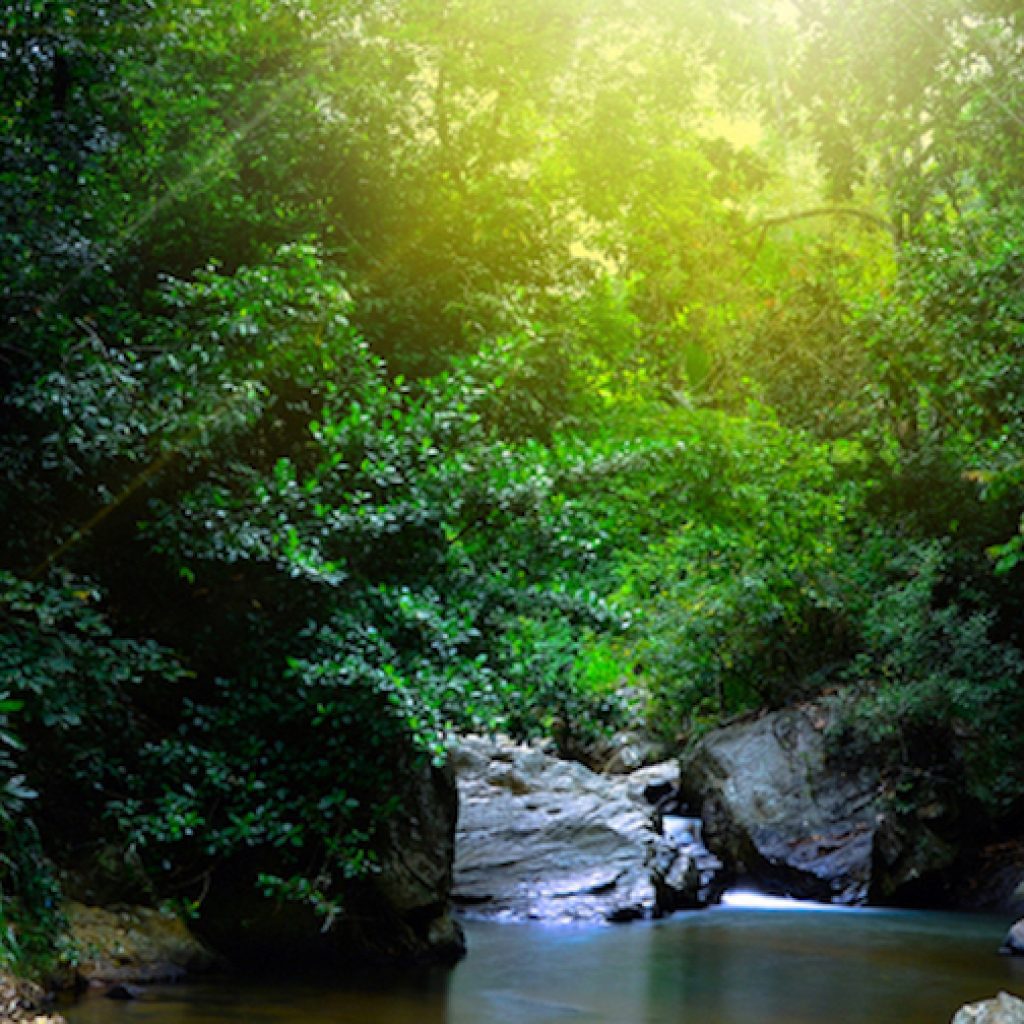

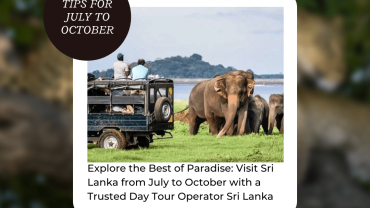
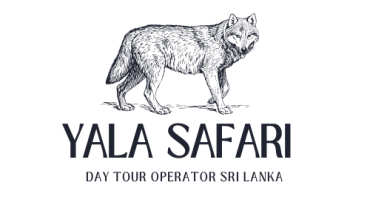


Comment (0)